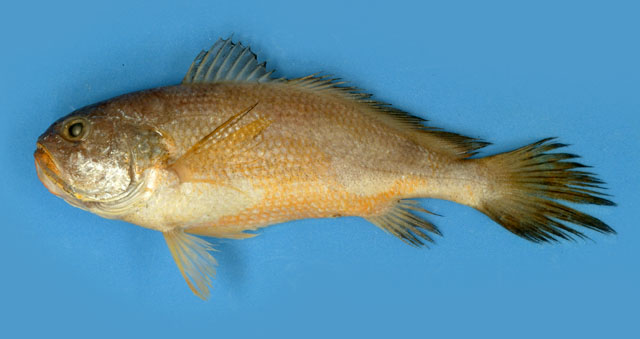| Sciaenidae (Drums or croakers) |
| 13.5 cm SL (male/unsexed) |
|
benthopelagic; brackish; marine; depth range 1 - 50 m |
| Western Central Pacific: along coasts of northwestern Australia and southern Papua New Guinea. |
|
Dorsal spines (total): 10-10; Dorsal soft rays (total): 33-36; Anal spines: 2-2; Anal soft rays: 7-7. Upper rostral pore median only; mental pores in 3 pairs, the first open at front of chin, separated by symphysis. Gill rakers long, slender, about 1.5 times longer than gill filaments at angle of arch, 13 to 17 on lower limb of first arch. Dorsal fin with IX spines, the second part of fin with I spine and 33 to 36 soft rays. Second spine of anal fin short, slender, 23 to 33 % of head length. Pectoral fin long, 25 to 27 % of standard length. Scales on head and body cycloid (smooth), except the belly and under side of caudal peduncle which are covered with weak ctenoid scales (slightly rough to touch); small scales present on basal quarter of soft parts of dorsal and anal fins. Swim bladder carrot-shaped; with about 26 pairs of arborescent appendages along its sides; each appendage with a well-developed dorsal and ventral limbs, the first pair entering head beyond transverse septum. |
| Inhabits shallow coastal waters and estuaries to depths of 50 m (Ref. 9772). |
|
Least Concern (LC); Date assessed: 30 June 2016 Ref. (130435)
|
| harmless |
|
Source and more info: www.fishbase.org. For personal, classroom, and other internal use only. Not for publication.

